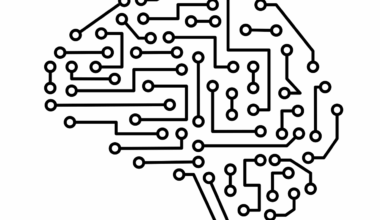Biomechanics and Its Role in Injury Prevention
Biomechanics is the science of movement and mechanics applied to biological systems, particularly human motion. In the realm of sports medicine, understanding biomechanics is crucial to improve performance and reduce injury risks for athletes. Using biomechanical principles, we can analyze how athletes move, the forces acting upon their bodies, and how these factors contribute to both performance and injury risk. Proper training techniques and condition management depend greatly on biomechanical insights. For example, identifying improper gait patterns can help determine the likelihood of developing conditions such as tendonitis or stress fractures. Additionally, an athlete’s biomechanics can impact rehabilitation strategies following injury. Tailoring rehabilitation programs to fit an individual’s specific biomechanics enables more effective recovery. Sports organizations increasingly recognize this connection, so athletes can benefit from biomechanical assessments that help in personalizing their training and recovery processes. As technology advances, tools such as motion capture systems and force plates are becoming integral in these assessments. In this way, understanding biomechanics reflects a key area in athlete education essential for enhancing performance safely.
In enhancing athlete outcomes, applying biomechanics goes beyond understanding motion patterns. It can also facilitate the better design of sports equipment, training regimens, and protective gear that accommodates the specific movements and demands of various sports. For instance, analyzing a runner’s foot strike can inform the development of shoes that better absorb impact forces, ultimately lowering injury incidence rates. Additionally, biomechanics allows coaches and trainers to create specialized training programs that align with individual athlete profiles, maximizing performance while minimizing potential risks. Coaches can leverage this understanding to teach athletes optimal techniques, allowing them to perform skills correctly while reducing excessive strain on joints and muscles. Biomechanical evidence lends itself to practical modifications, focusing on efficient movement patterns. One critical element of biomechanics is the analysis of joint angles and loading during sports activities. These measurements provide insights into where athletes may overexert themselves or take on undue risk during competition or training sessions. Leveraging these insights can inform decisions that protect athletes from preventing injuries and promoting longevity in their sporting careers.
The Importance of Joint Stability
Joint stability plays a critical role in an athlete’s ability to perform efficiently and with minimal risk of injury. In biomechanics, understanding how different joints function under various conditions can explain susceptibility to injuries such as sprains and strains. The stability of a joint is influenced not only by its anatomical structure but also through muscle and connective tissue dynamics. Biomechanical assessments can pinpoint weaknesses or imbalances in these areas. For instance, if certain muscles are weaker, this may lead to excess stress on joints during athletic performance. Thus, increasing joint stability can provide a foundation for better athletic performance and reduced injury risk. For example, strength training focusing on stabilizing muscles in the hips and knees can enhance an athlete’s functional capability. Preventive measures recommended through biomechanical insights can lead to more individualized training plans. Such plans are directed at counteracting identified weaknesses or imbalances, helping athletes perform movements effectively while minimizing injury risks. Committing to preventing injury through biomechanics empowers athletes to sustain longevity in their chosen sports.
Notably, advances in technology augment our ability to apply biomechanical principles effectively. Wearable technology, such as accelerometers and GPS systems, allows for real-time monitoring of athletic performance. Data collected aid in identifying how athletes are moving and provide insights into their biomechanics during practice and competitions. This data-driven approach offers immediate feedback, helping athletes adjust their form and technique to prevent injuries sustained through poor movement patterns. Coaches can use this data to create tailored coaching interventions to address issues as they arise. Furthermore, the incorporation of video analysis software allows for a closer examination of motion patterns during training and competition, enhancing understanding of poor biomechanics. By studying video footage, analysts can visually identify flaws, allowing athletes to correct their techniques quickly. Athletes benefit from this meticulous analysis as it can pinpoint areas of improvement that may lead to injury if left unaddressed. As a result, the integration of technology within biomechanics ensures a proactive strategy focusing on injury prevention while optimizing training efficiency.
Education and Resources for Athletes
Education and resources are invaluable elements for athletes striving to understand biomechanics and its significance in their training. Sports organizations should provide access to educational materials and workshops that emphasize the interplay between biomechanical principles and practical training applications. By equipping athletes with knowledge about their own bodies, they empower themselves to make informed decisions regarding their training and recovery. Furthermore, engaging with experienced professionals such as sports medicine experts and physiotherapists can help clarify biomechanical concepts. Personalized assessments conducted by these experts allow athletes to receive customized guidance in their regimes. Online platforms and resources also present valuable information, illuminating biomechanical theories and their practical implications for athletes. For instance, webinars, tutorials, and self-help resources make it easier for athletes and coaches to grasp concepts effectively. Creating a culture of awareness surrounding biomechanics in sports enables everyone involved in training and competition to prioritize injury prevention. Ultimately, dedicated education plays an essential role in forming a comprehensive approach towards optimizing athletic performance while safeguarding against injuries.
To cultivate injury prevention and optimization of performance, it is essential to promote collaborative efforts within the athletic community. Coaches, nutritionists, sports scientists, and psychologists should work together, integrating various expertise with biomechanics knowledge for optimal athlete care. Such collaborative practices can bring a holistic perspective to athlete preparation. Additionally, incorporating feedback from athletes themselves into training strategies can lead to unprecedented adjustments that enhance their performance. Athletes frequently possess a unique understanding of their own bodies and how they perform in specific sport settings. Consequently, fostering open communication between all parties can lead to sophisticated training approaches reflective of current biomechanical understanding. Moreover, recognizing that each athlete’s biomechanical profile is distinct encourages a more personalized approach to injury prevention. These personalized plans create an environment that accommodates the needs of each individual while maximizing performance capabilities. Together, this collaborative focus, backed by scientific understanding, nurtures an athletic community prepared to recognize, embrace, and implement the role that biomechanics plays in sustaining high performance and athletic health.
Final Thoughts on Biomechanics
In conclusion, biomechanics serves as a pillar in understanding and preventing injuries among athletes. Its principles guide training programs, rehabilitation strategies, and sports equipment design, all contributing to enhancing athletic performance. The value of biomechanics lies not just in mitigating injury risks but also in harnessing the potential within each athlete to achieve their best. Educating athletes and coaches alike is paramount, ensuring that they can utilize biomechanical insights to their advantage. As knowledge of biomechanics continues to evolve in line with technological advancements, the possibilities for improved insights and applications remain broad. Embracing these advancements will foster an environment where athletes can excel without excessive risks. By prioritizing biomechanics, it becomes feasible to continue enhancing athletic performance while simultaneously decreasing injury occurrences. The importance of vigilance in understanding biomechanics cannot be understated. Ultimately, promoting a foundation centered on biomechanics will not only prolong athletes’ careers but also lead to greater outcomes across various sports disciplines. Commitment to this knowledge will yield a generation of informed athletes prepared to take on challenges while maintaining their health and safety.
In summary, biomechanics contributes significantly to aiding athletes in achieving their goals by mitigating the risks associated with injuries. By emphasizing education, technology, and collaborative approaches, the sports community can enhance its understanding of this scientific field. As athletes integrate biomechanical principles into their training regimens, they stand a higher chance of excelling while minimizing injuries. A focus on biomechanics lays the groundwork for safer, more effective athletic training programs and environments. Achieving excellence in sports not only involves physical prowess but also entails recognizing and implementing the science that supports successful performance.


